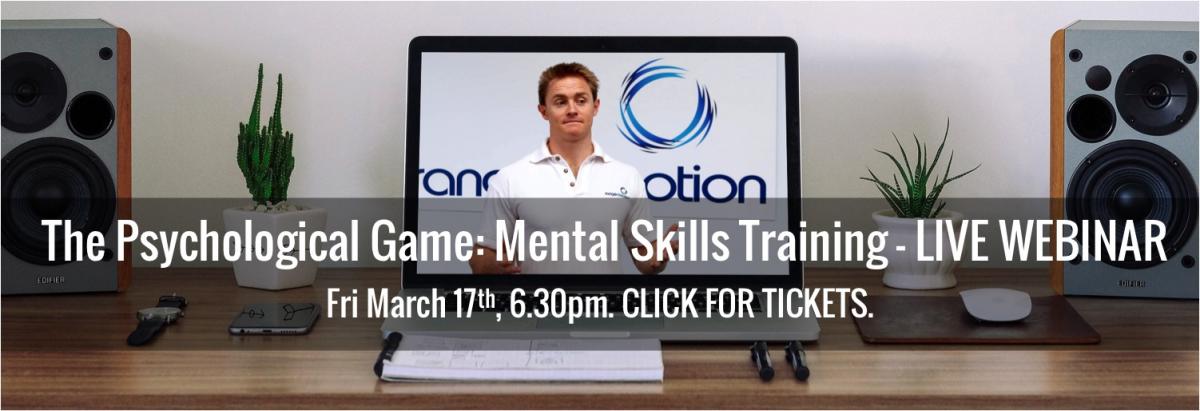Other posts in this series include:
- Arousal Regulation – Psychological Skills Training
- Imagery – Psychological Skills Training
- Self Confidence – Psychological Skills Training
- Goal Setting – Psychological Skills Training
Education:
1. Concentration is made up of:
- Selective attention: Focusing on relevant cues in the environment, selecting what cues to attend to and which to disregard.
- Maintaining attentional focus: Maintaining that focus over time.
- Situational awareness: Having awareness of the situation.
2. There are four types of attentional focus (diagram on page 331). Shifts between these types of focus is important as the situation demands.
- Broad: Aware of many factors.
- Narrow: Aware of few factors.
- External: Directed outwardly (to an opponent, situation etc).
- Internal: Directed to thoughts and feelings.

- Attentional problems are usually caused by an inappropriate attentional focus (ie, incorrectly broad/narrow, or external/internal). Attentional problems are classified as internal or external:
- Internal distracters: Distractions from within ourselves.
- Focusing on past events (especially past mistakes/failures).
- Focusing on future events: Thinking about consequences of actions, rather than the action itself.
- Choking: Shifting focus from relevant external cues to narrow/internal cues related to fears of poor performance.
- Overanalysing body mechanics: Excessive focus on the skill when the skill has already been learnt (the ‘yipps’).
- Mental fatigue.
- Self talk.
- External distracters: Distracters from the environment.
- Visual distracters.
- Auditory distracters.
- Gamesmanship: Behaviour of opponents.
- Internal distracters: Distractions from within ourselves.
- Self Talk:
- Positive self-talk: Enhances self esteem, motivation, attentional focus and performance. Creates positive emotions.
- Negative self-talk: Critical and demeaning. Creates negative emotions.
- How does self-talk work?
- An event occurs.
- As a result of the event we undertake self-talk/internal dialogue.
- Our self-talk leads to a certain emotional/physiological/behavioural response.
- Uses of self-talk:
- Skill acquisition: To focus attention on an important element of the task. eg: ‘finish the pull’.
- Breaking bad habits: A reminder to avoid the unwanted action/behaviour. eg: ‘hips down’.
- Initiating action: As a motivational tool. eg. ‘explode’.
- Sustaining effort. eg. ‘keep moving’.
- Techniques for improving self-talk:
- Thought stopping: Concentrating on an undesired thought and using a trigger or cue to clear your mind, eg. ‘stop’. Then shifting your focus to a task related cue.
- Changing negative self-talk to positive self-talk: Becoming aware of negative self talk and replacing it with positive self talk.
- Tips for improving concentration:
- Simulation training: Emulating competition situations in training.
- Cue words: Using instructional or motivational words as part of your self-talk.
- Employ nonjudgemental training: Don’t classify performance into good and bad, rather, focus on strategies for improvement.
- Establish routines: Routines for before or during an event to focus attention, reduce anxiety, eliminate distractions and enhance confidence.
- Develop competition plans: Process goals will focus the mind on the task at hand.
- Practice eye control: Focus on a one point to reduce unwanted visual distractions.
- Focus on the present.
- Overlearn skills: Overlearning skills makes a skill automatic, allowing the athlete to focus on other areas of the performance environment.





